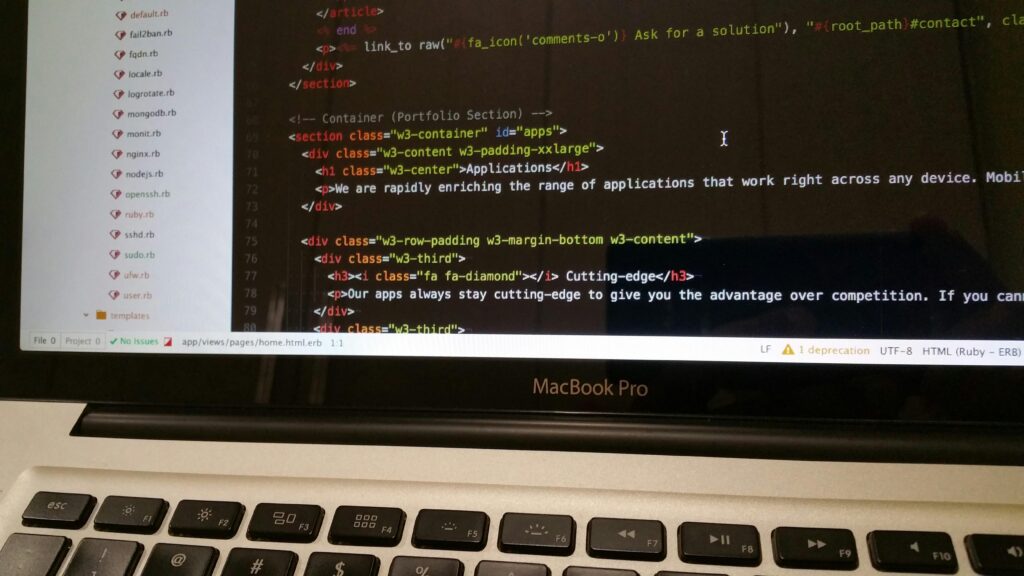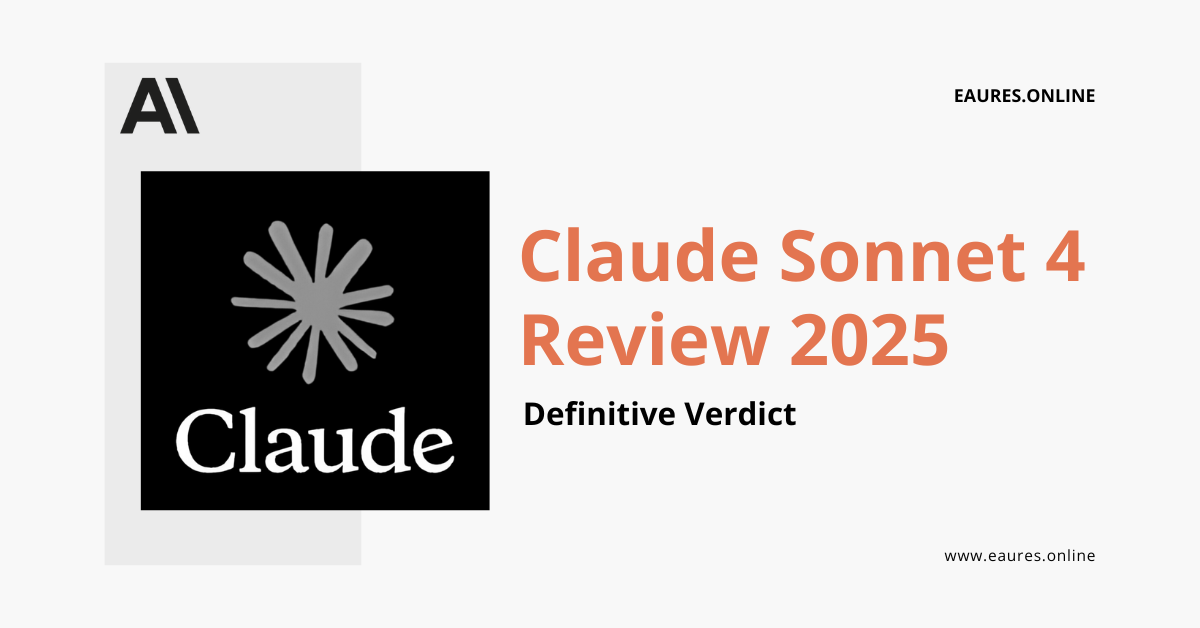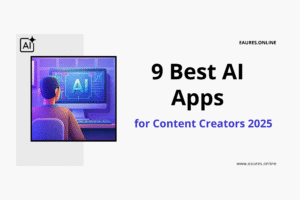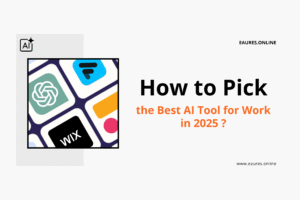Table of Contents
Claude Sonnet 4 Review 2025: Definitive Verdict
Executive summary: why this Claude Sonnet 4 Review matters in 2025
Claude Sonnet 4 is Anthropic’s mid‑tier model in the Claude 4 family, positioned as a high‑volume workhorse that pairs strong reasoning with practical latency and cost. In this Claude Sonnet 4 Review, we test that promise against what buyers actually need in 2025: durable coding performance, agent‑readiness (tool use, long‑horizon tasks), predictable pricing, enterprise governance, and broad platform availability. Anthropic introduced the Claude 4 line on May 22, 2025, with Sonnet 4 delivered alongside Opus 4 as a hybrid‑reasoning model that can switch between near‑instant answers and extended thinking; Sonnet 4 is available to all users in the Claude app, while paid plans unlock more capabilities. Anthropic+1
From a buyer’s perspective, three takeaways define this Claude Sonnet 4 Review:
- Performance at the right price: Sonnet 4’s headline SWE‑bench Verified 72.7% result indicates top‑tier coding competence at a fraction of frontier‑model cost. Anthropic
- Agentic workflow features: Extended thinking with parallel tool use, plus API additions such as a code execution tool, Model Context Protocol (MCP) connector, Files API, and prompt caching, make Sonnet 4 practical for production agents. Anthropic+1
- Enterprise‑ready footprint: Sonnet 4 ships on the Anthropic API, Amazon Bedrock, and Google Cloud Vertex AI, and is selectable in GitHub Copilot—a rare level of ecosystem breadth this early in a model’s lifecycle. The GitHub Blog+3Anthropic+3Amazon Web Services, Inc.+3
If you’re deciding between Sonnet 4 and a larger, slower, more expensive model, this Claude Sonnet 4 Review will help you match capability to use case.

What’s new in Claude Sonnet 4 vs 3.7
Anthropic positions Sonnet 4 as a significant upgrade to Sonnet 3.7 with better coding, truer implementation reporting, and improved steerability. On Anthropic’s internal and publicized evals, Sonnet 4 reaches 72.7% on SWE‑bench, with reported gains across agentic tasks and instruction following compared with 3.7. Practically, that means fewer detours mid‑task, cleaner code edits, and steadier multi‑step execution—key reasons this Claude Sonnet 4 Review finds it production‑fit for high‑volume workloads. Anthropic
A second highlight in this Claude Sonnet 4 Review is hybrid reasoning. Sonnet 4 can respond quickly in “normal” mode or switch to extended thinking for deeper reasoning and planning, including tool calls during the reasoning process (for example, web search or the code execution tool). This reduces the orchestration you need to bolt onto the model when building agents. Anthropic+1
Third, Sonnet 4 increases developer‑visible limits and controls: a 200K token context window for inputs, up to 64K output tokens, and—optionally for qualified orgs—a 1M token context window (beta) with premium long‑context pricing. These ceilings matter when you’re feeding large knowledge bases, long code traces, or many RAG chunks into a single turn. Anthropic+1
Pricing & plans: the cost picture (and how to lower it)
For this Claude Sonnet 4 Review, pricing is one of the strongest selling points:
- Base price: $3 per million input tokens and $15 per million output tokens. Anthropic
- Batch API: 50% discount on both input and output for non‑time‑sensitive jobs. Anthropic
- Prompt caching: 5‑minute and 1‑hour caches (at multipliers) can cut costs up to ~90% on repeated context and reduce latency, particularly for long‑running agent workflows. Anthropic+1
- Long context (beta): If you enable the 1M context window, requests over 200K input tokens are priced at a premium tier (currently $6/MTok input and $22.50/MTok output). Anthropic
For most teams, these levers—especially caching plus batch—are the difference between pilots and production. If you’re migrating from more expensive frontier models, the savings alone can fund better evals and guardrails at launch. This cost profile is one reason our Claude Sonnet 4 Review rates its value‑for‑money as excellent.
Capabilities deep dive
Coding performance (SWE‑bench and beyond)
Sonnet 4’s 72.7% on SWE‑bench Verified places it in top company for real‑world software engineering tasks. The Claude 4 launch notes also emphasize steadier multi‑file edits and improved alignment to requested scope—two pain points that previously drove PR rework and human editorial overhead. If you’re evaluating for code reviews, bug fixes, or mid‑sized features, our Claude Sonnet 4 Review finds Sonnet 4 a strong default model. Anthropic
Pro tip: when evaluating, include at least a subset of SWE‑bench or similar repo‑based tasks in your own stack to see if this benchmarked uplift translates to higher merge rates in practice. (See the SWE‑bench project for methodology.) Amazon Web Services, Inc.
Reasoning & agent benchmarks
On the launch appendix, Sonnet 4 posts the following “without extended thinking” where reported: GPQA Diamond 70.0%, MMMLU 85.4%, MMMU 72.6%, and AIME 33.1%. Extended thinking further improves outcomes on agentic tasks like TAU‑bench. While individual scores vary by prompt and scaffold, they corroborate this Claude Sonnet 4 Review insight: Sonnet 4 offers frontier‑adjacent reasoning without frontier‑model cost. Anthropic
Context window & output length
As covered earlier, Sonnet 4 accepts 200K tokens of context by default, supports up to 64K output tokens, and offers an optional 1M token window in beta for eligible organizations. These limits let Sonnet 4 tackle long code diffs, policy manuals, or thousands of RAG snippets in fewer hops—vital for agent workflows where each hop compounds latency and cost. Anthropic
Extended thinking + parallel tool use
A major step forward—and a consistent theme in this Claude Sonnet 4 Review—is that Sonnet 4 can alternate between reasoning and tools during extended thinking. In practice, this allows the model to read, plan, and act in a single turn (e.g., search, retrieve, analyze, and then synthesize a decision). For builders, Anthropic’s API adds server‑side tools: a code execution tool for sandboxed Python analytics and visuals, an MCP connector to call remote tools, a Files API for persistent documents, and extended prompt caching. These are the primitives you need to move from chat demos to production agents. Anthropic+1
Multimodality (vision) and platform support
Sonnet 4 supports vision—you can “chat about images” in environments like GitHub Copilot—and ships broadly across cloud platforms and IDEs, which lowers integration risk and increases team adoption. This Claude Sonnet 4 Review values that reach: it’s easier to meet your developers where they already work. The GitHub Blog

Real‑world workflows this Claude Sonnet 4 Review recommends
For engineering teams
- Code review & triage: Use Sonnet 4 to annotate diffs, isolate likely regressions, and propose minimally invasive edits. Its coding discipline reduces the “brute‑force fix” tendency seen in earlier models. Anthropic
- Small‑to‑mid feature work: Pair Sonnet 4 with CI to move tickets from issue → PR with a deterministic scaffold; reserve Opus 4 for long‑horizon refactors. Amazon Web Services, Inc.
- IDE & terminal: If your team prefers agentic coding inside IDEs and terminals, Claude Code integrates directly with VS Code and JetBrains, shows inline edits, and can run background tasks via GitHub Actions. Anthropic
If you’re building a policy for model selection within Copilot or your own toolchain, our internal guide on the best AI code assistants in 2025 compares strengths across vendors and pricing; use it to structure a fair bake‑off in your stack. (See this benchmark article on hands‑on AI code assistants in 2025 for ideas.)
For analytics & research
- RAG at scale: 200K context (and optional 1M beta) lets Sonnet 4 absorb large dossiers and keep longer conversational state; combine with Files API for reusable corpora and prompt caching to amortize costs. Anthropic+1
- Executable analysis: The code execution tool upgrades the chat from “advice” to reproducible analysis, plots, and CSV transformations without leaving your pipeline. Anthropic
For customer operations & knowledge work
- Agents with tools: Sonnet 4’s extended thinking and parallel tool calls work well for complex, multi‑step support flows—classification → retrieval → action. Anthropic
- Document production: In the Claude app, Anthropic recently added the ability to create and edit files (spreadsheets, docs, slides, PDFs) directly—useful when your support or ops team needs ready‑to‑download deliverables. Anthropic
Integrations & ecosystem (a risk‑reducing strength)
This Claude Sonnet 4 Review gives Sonnet 4 high marks for availability:
- Anthropic API: Full access to hybrid reasoning and tools with clear pricing. Anthropic
- Amazon Bedrock: GA since launch; strong fit for AWS‑first shops that want managed, compliant access and regional choices. Amazon Web Services, Inc.+1
- Google Cloud Vertex AI: GA as a Model‑as‑a‑Service option with standard Vertex controls, enabling multicloud posture. Google Cloud+1
- GitHub Copilot: Sonnet 4 is selectable in Copilot Chat across VS Code, Visual Studio, JetBrains, Xcode, and more—helpful for organizations centralizing developer experience. The GitHub Blog
- Claude Code: A terminal‑first coding agent that sees and edits your codebase directly, with plans mapped to Anthropic offerings. Anthropic
This breadth is practical insurance: you can standardize on one model family while retaining choice of cloud and dev tooling.
Safety, security & governance
Anthropic’s Claude 4 launch emphasized reduced “shortcut” behaviors on agentic tasks (65% less than Sonnet 3.7) and thinking summaries that make the model’s reasoning more inspectable. For higher‑risk deployments (e.g., ASL‑3 contexts), Anthropic outlines additional safeguards and invites enterprise contact. Our Claude Sonnet 4 Review interprets these as meaningful steps toward operational transparency. Anthropic
Two product updates in September 2025 also matter for governance:
- Memory for teams: Claude can now remember projects and preferences for Team and Enterprise, with incognito chats and user‑visible memory summaries to edit or disable. This blends continuity with control and avoids re‑explaining context every session. Anthropic
- File creation in app: The ability to create/edit files via a private computer environment introduces new data‑flow considerations (e.g., internet access during file creation). Admins should review settings and risk posture before enabling. Anthropic
Finally, Anthropic updated its regional restrictions in September 2025, clarifying prohibitions for entities controlled from unsupported jurisdictions (e.g., China). This affects vendor selection in multinational portfolios; review your ownership and compliance posture accordingly. Anthropic

Comparisons & alternatives (choose by job‑to‑be‑done)
Every Claude Sonnet 4 Review should situate the model against likely alternatives:
Sonnet 4 vs Opus 4 (and Opus 4.1)
- Opus 4/4.1 is the frontier option: higher sustained performance on long‑running, multi‑hour agent tasks and the strongest coding scores; cost is correspondingly higher.
- Sonnet 4 is the default for volume: most of the capability, lower cost, and faster typical latency. Our guidance: run Sonnet 4 for day‑to‑day workloads and escalate to Opus for long refactors, complex data synthesis, or fragile, multi‑step automations. Anthropic
Sonnet 4 vs ChatGPT‑5 (and the broader OpenAI lineup)
If you’re comparing families, anchor the test to your workflows and governance needs. We’ve published a head‑to‑head with hands‑on scenarios—Claude Sonnet 4 vs ChatGPT‑5: Ultimate Benchmark—covering coding, context windows, tool use, pricing, and enterprise fit. Use those test ideas to build your own red/blue team bake‑off in staging.
Sonnet 4 vs Google Gemini 2.5 (when Opus 4.1 enters the conversation)
For teams prioritizing Google Cloud or multimodality pipelines, you’ll want a balanced take on Gemini 2.5 vs Claude Opus 4.1 before deciding which model anchors your agents and which becomes the sub‑agent. See our practical, 9‑dimension benchmark on Gemini 2.5 vs Claude Opus 4.1 to calibrate results beyond vendor marketing.
Which coding assistant stack?
Sonnet 4’s performance and price make it an obvious inclusion in a multi‑model coding strategy. If you’re designing that stack, our 2025 code assistant comparison offers benchmark tasks, pricing, and procurement guidance (Copilot, Amazon Q Developer, Gemini Code Assist, Cursor, Windsurf, Tabnine, Continue, JetBrains AI, Cody, Replit). Pair those insights with this unified prompting flow for Copilot + Claude to drive consistency in your prompts, contexts, and iteration loops.
Implementation guide: getting the most from Sonnet 4
Prompting patterns that work
- State the target artifact and constraints: “Propose a PR that touches only
x.tsandy.test.tswith minimal changes; do not alter interfaces.” Sonnet 4 adheres well to constrained scopes—one of the bright spots in this Claude Sonnet 4 Review. Anthropic - Use extended thinking selectively: Only enable it when your task benefits from plan‑act cycles; otherwise keep responses near‑instant. Anthropic
- Let the model call tools: Provide the smallest viable set (search, code exec, editor) and let Sonnet 4 pick; it can use tools in parallel, reducing orchestration overhead. Anthropic
- Cache and reuse long context: Load reference docs via Files API, then rely on prompt caching to reuse that context cheaply across turns. Anthropic
Cost optimization checklist
- Right‑size the model: Prefer Sonnet 4 for daily volume; reserve Opus 4/4.1 for deep refactors and research agents. Anthropic
- Batch when you can: Move non‑interactive tasks to Batch API for the 50% discount. Anthropic
- Exploit caching: 5‑minute cache for standard chat contexts; 1‑hour cache for long‑horizon agents. Anthropic
- Monitor long‑context billing: If you enable the 1M window (beta), know that >200K input tokens flips pricing tiers across the entire request. Anthropic
Platform choices & multicloud posture
- AWS shops: Deploy Sonnet 4 via Amazon Bedrock for managed controls and regional selection; leverage Bedrock’s Converse API and region coverage. Amazon Web Services, Inc.
- GCP shops: Use Vertex AI for MaaS deployment and consistent IAM/quotas; official docs list Sonnet 4 with usage guidance. Google Cloud+1
- GitHub‑first orgs: Surface Sonnet 4 inside GitHub Copilot so developers can switch models in their existing chat UI. The GitHub Blog
- IDE/terminal power users: Roll out Claude Code; it sees your repo, proposes inline edits, and runs in the terminal with VS Code/JetBrains integrations. Anthropic
Pros & cons (the quick read in this Claude Sonnet 4 Review)
Strengths
- High coding ceiling at practical cost (SWE‑bench 72.7% with improved multi‑file precision). Anthropic
- Agent‑ready: Extended thinking + parallel tool use, plus API features (code execution, MCP, Files API, caching). Anthropic
- Broad availability: Anthropic API, Bedrock, Vertex AI, GitHub Copilot, Claude Code. Anthropic+3Amazon Web Services, Inc.+3Google Cloud+3
- Operational features: Memory for teams with incognito chats, and in‑app file creation/editing. Anthropic+1
Trade‑offs
- Not the absolute frontier: For multi‑hour autonomous agents and the hardest refactors, Opus 4/4.1 still leads. Anthropic
- Long‑context beta pricing: 1M context is excellent but in beta and priced at a premium beyond 200K input tokens; mind thresholds. Anthropic
- Governance diligence: New features (memory, computer/file use) add power—and require thoughtful admin policies. Anthropic+1

The definitive verdict
The bottom line of this Claude Sonnet 4 Review: Sonnet 4 is the most “deployable” advanced model for everyday, high‑volume work in 2025. It captures much of the frontier’s reasoning and code competency at a price and latency profile that scales. Paired with extended thinking and the API’s agent‑building features, Sonnet 4 is a pragmatic default: choose it for 80–90% of tasks, and escalate to Opus 4/4.1 when you truly need frontier‑level endurance and autonomy. If your org values multicloud optionality, developer familiarity (Copilot, IDEs, CLI), and enterprise controls, Sonnet 4 meets you where you already work. Anthropic+2Amazon Web Services, Inc.+2
For deeper model‑to‑model buyer guidance, use our comparison pieces—Claude Sonnet 4 vs ChatGPT‑5 and Gemini 2.5 vs Claude Opus 4.1—and bring those evaluation ideas into your own stack. And if you’re operationalizing Sonnet 4 inside Microsoft’s ecosystem, our unified prompting flow for Copilot and Claude is a practical starting point to boost accuracy and speed.
Frequently asked buyer questions (fast facts from this Claude Sonnet 4 Review)
- Release date? May 22, 2025. Anthropic
- Context window? 200K tokens by default; 1M (beta) for qualified orgs. Anthropic+1
- Output length? Up to 64K tokens. Anthropic
- Pricing? $3/MTok input, $15/MTok output; Batch API 50% discount; caching multipliers. Anthropic
- Where is it available? Anthropic API, Amazon Bedrock, Vertex AI, GitHub Copilot, Claude Code. Amazon Web Services, Inc.+2Google Cloud+2
- Enterprise features? Team/Enterprise memory with incognito; file creation/editing in app; expanded regional use restrictions policy. Anthropic+2Anthropic+2




